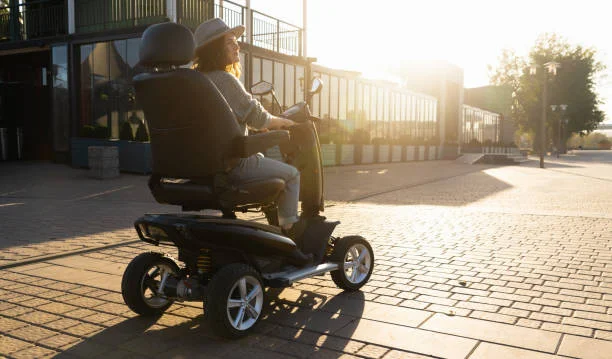Maintaining your mobility scooter in peak condition is essential for ensuring reliability, safety, and longevity. Regular maintenance can help prevent costly repairs and extend the life of your scooter. Below are the top maintenance tips to keep your mobility scooter running smoothly.
1. Regular Cleaning
Regular cleaning is fundamental to maintaining the overall condition of your mobility scooters. Dust, dirt, and debris can accumulate on various parts, leading to wear and tear over time. Here’s how to keep your scooter clean:
- Exterior Cleaning: Use a damp cloth to wipe down the exterior of your mobility scooter. Avoid using high-pressure hoses or submerging the scooter in water, as this can damage electrical components.
- Seat and Upholstery: Clean the seat and any upholstery with mild soap and water. For stubborn stains, use a fabric cleaner suitable for the material.
- Underneath the Scooter: Check under the scooter for any trapped debris, especially if you often travel over grassy or gravel areas. Use a soft brush to remove any build-up.
2. Battery Maintenance
The battery is the heart of mobility scooters, and proper maintenance is crucial for ensuring it remains in good working condition.
- Regular Charging: Always charge the battery fully after each use. Even if you have not used the scooter extensively, make it a habit to charge it nightly. Avoid letting the battery drain completely before recharging.
- Storage: If you need to store your scooter for an extended period, ensure the battery is fully charged before storage and recharge it periodically to maintain its health.
- Battery Terminals: Check the battery terminals regularly for corrosion. Clean any corrosion with a mixture of baking soda and water, and ensure the terminals are tightly connected.
3. Tire Inspection and Maintenance
Tires are critical for the safe and efficient operation of your mobility scooter. Regular inspection and maintenance can help prevent accidents and ensure a smooth ride.
- Air Pressure: If your scooter has pneumatic tires, check the air pressure regularly. Refer to the manufacturer’s guidelines for the correct pressure levels and inflate the tires as needed.
- Tire Condition: Inspect the tires for signs of wear, such as cracks or bald spots. Replace tires that show significant wear to maintain proper traction and stability.
- Wheel Alignment: Ensure the wheels are aligned correctly to prevent uneven tire wear and improve the scooter’s handling.
4. Brake System Check
The braking system is crucial for your safety when using mobility scooters. Regular checks can help ensure the brakes function correctly.
- Brake Pads: Inspect the brake pads for wear and tear. Replace them if they are worn down to ensure effective braking.
- Brake Lever and Cable: Check the brake lever and cable for any signs of damage or wear. Ensure the cable is properly lubricated and the lever moves smoothly.
- Test Brakes: Regularly test the brakes by applying them while riding slowly. Ensure the scooter stops promptly and smoothly without any unusual noises.
5. Regular Servicing
Professional servicing is essential for keeping your mobility scooter in top condition. Schedule regular check-ups with a certified technician who can thoroughly inspect and service your scooter.
- Annual Servicing: At a minimum, have your scooter serviced annually by a professional. They can check and adjust critical components such as the motor, battery, and electrical systems.
- Software Updates: If your mobility scooter has a digital display or advanced features, ensure the software is updated to the latest version. This can improve performance and fix any bugs or issues.
6. Keep it Covered
When not in use, keep your mobility scooter covered to protect it from the elements. Exposure to rain, snow, and direct sunlight can cause damage over time.
- Use a Waterproof Cover: Invest in a high-quality waterproof cover to protect your scooter from moisture and UV rays.
- Indoor Storage: If possible, store your scooter indoors or in a garage to shield it from extreme weather conditions.
7. Check Lights and Indicators
Lights and indicators are vital for your safety, especially when using your mobility scooter in low-light conditions or on busy roads.
- Headlights and Taillights: Regularly check that the headlights and taillights are working correctly. Replace any burnt-out bulbs immediately.
- Indicator Lights: Ensure the indicator lights function properly and are visible. Test them regularly and replace any faulty bulbs.
8. Tighten Loose Parts
Over time, parts of your mobility scooter may become loose due to regular use. Regularly inspect and tighten any loose parts to maintain the scooter’s integrity.
- Check Bolts and Screws: Inspect all bolts and screws and tighten any that have come loose. Pay particular attention to the seat, handlebars, and wheels.
- Frame and Chassis: Check the frame and chassis for any signs of damage or looseness. Tighten or repair as needed to ensure stability.
Wrap Up
In conclusion, maintaining your mobility scooter involves a combination of regular cleaning, diligent battery care, frequent tire inspections, and ensuring the brake system is in good working order. Regular professional servicing, proper storage, functional lights and indicators, tightening of loose parts, and adequate lubrication are also crucial. By adhering to the guidelines outlined in your scooter’s manual and implementing these top maintenance tips, you can ensure that your mobility scooter remains reliable, safe, and efficient, ultimately extending its lifespan and providing you with continued mobility and independence.






